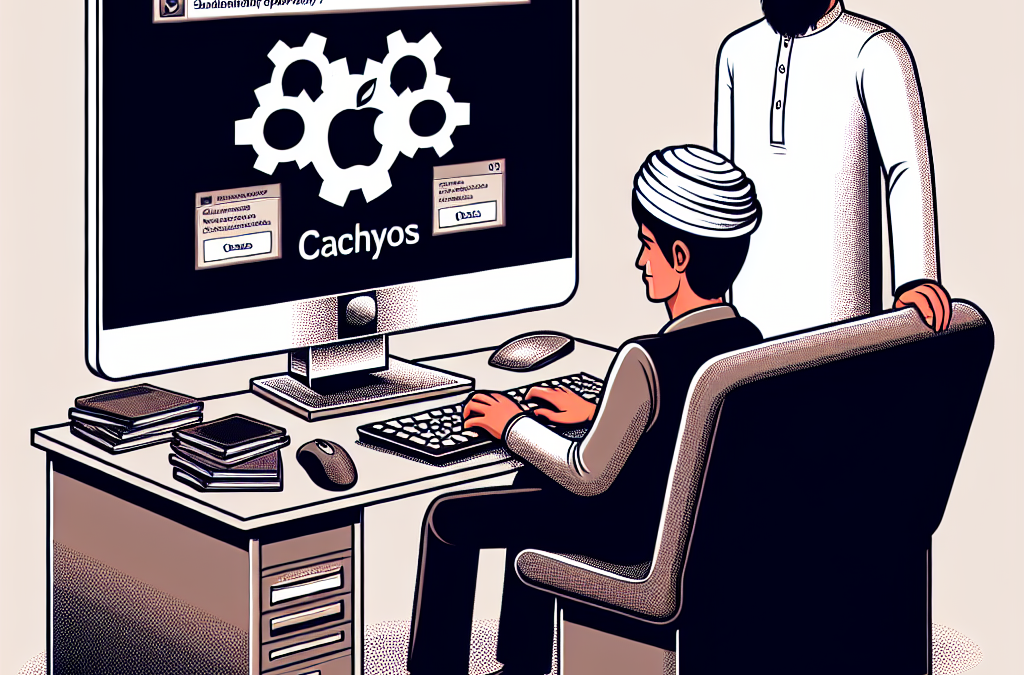Why I Switched to CachyOS: The Benefits Over Traditional Arch Linux Systems
Why did I recently switch to use CachyOS?
In the ever-evolving landscape of Linux distributions, choosing the right one can significantly impact productivity, system performance, and overall user satisfaction. My recent switch to CachyOS from traditional Arch Linux systems was driven by several compelling factors that cater to both my needs for robust performance and a desire for a cutting-edge user experience.
Initially, what drew me to CachyOS was its reputation for enhanced performance. CachyOS implements a custom kernel specifically optimized for performance. This kernel, known as the Cachy Kernel, is designed to prioritize tasks more efficiently and handle multiple processes better than the generic Linux kernel used in standard Arch installations. This results in a snappier and more responsive computing experience, which is crucial for my intensive tasks such as video editing and software development.
Moreover, CachyOS introduces an advanced package management system that builds on the strengths of Arch’s Pacman. It incorporates additional optimizations and patches that improve package installation times and system stability. This feature particularly appealed to me, as it reduces system maintenance time and allows me to focus more on productivity tasks.
Another significant advantage of CachyOS is its commitment to providing a bleeding-edge software environment. Like Arch Linux, CachyOS is a rolling release, meaning it continuously receives the latest software updates. However, CachyOS takes this a step further by integrating more frequent testing and updates for its kernels and key packages. This approach ensures that I am always working with the most up-to-date software, which is vital for the security and efficiency of my system.
Security is another area where CachyOS shines. The distribution includes enhanced security features that go beyond what traditional Arch offers. For instance, CachyOS comes with pre-configured security enhancements such as AppArmor and firewalld, which are not set up by default in Arch. These tools provide an additional layer of protection against potential threats, giving me peace of mind when navigating the web or installing new applications.
Transitioning to CachyOS was also influenced by its user-friendly yet powerful customization options. While Arch Linux is known for its flexibility, CachyOS extends this by offering a more accessible configuration process, making it easier to tweak system settings without compromising the potential for advanced customization. This is particularly beneficial for users like me who appreciate Arch’s philosophy but are looking for a slightly more guided experience without the need for extensive manual configuration.
Finally, the community surrounding CachyOS, though smaller than Arch’s, is incredibly dedicated and supportive. The focused nature of this community has led to highly specialized support and rapid responses to queries, which has been invaluable during my transition period. Engaging with this community has not only eased my switch but has also enhanced my understanding and utilization of the system’s full capabilities.
In conclusion, my decision to switch to CachyOS was driven by its superior performance, cutting-edge software updates, enhanced security features, user-friendly customization, and a supportive community. These factors combined to create a compelling case for adopting CachyOS over traditional Arch Linux systems, providing a tailored solution that meets my specific needs while pushing the boundaries of what I can achieve with a Linux distribution.
CachyOS vs. Arch Linux: A Detailed Comparison of Package Management Efficiency

Why did I recently switch to use CachyOS?
In the world of Linux distributions, the choice often boils down to flexibility, performance, and the ease of package management. Arch Linux has long been the go-to choice for advanced users due to its rolling release model, vast repositories, and the AUR (Arch User Repository), which provides access to a plethora of packages maintained by the community. However, my recent switch to CachyOS from Arch Linux was motivated by several compelling enhancements in package management efficiency that CachyOS offers.
CachyOS, while based on Arch and striving to maintain compatibility with its repositories, introduces significant optimizations and improvements that cater specifically to power users who seek an even more streamlined and efficient computing experience. One of the primary reasons for my switch was CachyOS’s innovative approach to package compilation and management. Unlike Arch, where packages are optimized for general compatibility across various hardware, CachyOS uses more aggressive compiler optimizations. This means that the software is not only tailored more closely to specific hardware but also can run faster due to these optimizations.
Moreover, CachyOS employs the use of “modprobed-db” and a custom Linux kernel, which is configured to load only the necessary modules required by your hardware at runtime. This selective loading significantly reduces the kernel’s memory footprint and boosts the startup and operational speed of the system. In contrast, the standard Arch setup includes a more generic kernel that may not be as finely tuned to the specific needs of your hardware.
Another aspect where CachyOS shines is its handling of updates and package installations. While Arch Linux is known for its bleeding-edge updates, this can sometimes lead to stability issues due to the rapid changes and updates that are pushed to the users. CachyOS addresses this by implementing a more controlled update mechanism, which ensures that updates are not only timely but also thoroughly tested to maintain system stability and reliability. This approach has saved me numerous hours that I would have otherwise spent troubleshooting post-update issues commonly encountered in a typical Arch environment.
The use of Btrfs as the default filesystem in CachyOS is another advantage. This modern filesystem comes with built-in support for snapshots and rollbacks, allowing users to easily revert their systems back to a previous state in case of a malfunction or an undesired system change. This feature is particularly useful in a rolling release model where the occasional breakage might occur, and it provides an additional layer of data protection and system reliability.
Lastly, the community around CachyOS, though smaller than Arch’s, is highly dedicated and focused on enhancing system performance and stability. The feedback loop between users and developers is tight, which often leads to quicker resolutions of issues and more frequent incorporation of user-suggested improvements.
Transitioning from Arch Linux to CachyOS was a decision driven by the pursuit of a more efficient and tailored Linux experience. The nuanced improvements in package management, system performance, and stability have provided a noticeable enhancement in my daily computing tasks. For those who are comfortable with Arch but desire a setup that squeezes out more performance and offers better control over system updates, CachyOS is definitely worth considering.
Exploring CachyOS: A Seamless Transition from Arch Linux for Enhanced Package Management
Why did I recently switch to use CachyOS?
In the ever-evolving landscape of Linux distributions, finding one that aligns perfectly with your specific needs can be a daunting task. As a long-time user of Arch Linux, I appreciated its rolling release model and the control it offered over system configuration. However, the quest for a more optimized and efficient system led me to explore CachyOS, a decision that has significantly transformed my computing experience.
CachyOS, while based on Arch Linux, introduces several enhancements that cater to both new and experienced users seeking improved performance and package management. One of the primary reasons for my switch was CachyOS’s innovative approach to system optimization. The distribution uses the BMQ (BitMap Queue) scheduler and custom-compiled kernels optimized for specific hardware. This means that right from the installation, the system is tailored to leverage the full potential of your hardware, enhancing both speed and responsiveness.
Moreover, CachyOS employs a unique package management system that builds on the strengths of Arch’s Pacman with additional robust features. It integrates an automated build system that compiles software specifically for your machine’s architecture, ensuring that you always get the best performance out of your applications. This is a significant step up from the generic binaries provided by many other distributions, which may not be optimized for all types of hardware.
Transitioning to CachyOS was surprisingly smooth, thanks in part to its compatibility with Arch Linux. This compatibility means that it supports the Arch User Repository (AUR), one of the largest community-driven repositories in the Linux world. Users who rely on AUR for access to cutting-edge software will find CachyOS particularly appealing, as it maintains this access while enhancing other aspects of the system.
Another compelling feature of CachyOS is its security enhancements. The distribution includes several security-focused tools and kernel hardening techniques that are not as prominently featured in Arch Linux. These additions provide an extra layer of protection against vulnerabilities, making CachyOS a wise choice for those who prioritize security without wanting to sacrifice performance.
Furthermore, CachyOS is committed to providing a clean user experience by avoiding unnecessary bloat. It offers a minimal installation option that allows users to install only what they need, which is ideal for advanced users who prefer to build their systems from the ground up. This approach not only keeps the system lightweight but also minimizes potential security risks associated with unnecessary packages.
The community surrounding CachyOS, though smaller than Arch’s, is highly dedicated and supportive. Newcomers to CachyOS will find a wealth of documentation and a welcoming community ready to help with any issues that arise during the transition. This supportive environment is crucial for users who are migrating from another system and might need guidance in navigating the nuances of a new distribution.
In conclusion, my switch to CachyOS was driven by a desire for a Linux distribution that not only offers the flexibility and control I enjoyed in Arch Linux but also introduces significant optimizations and enhancements that improve overall system performance and security. The seamless transition, coupled with advanced package management and a supportive community, has reaffirmed my decision to adopt CachyOS as my primary operating system. For those contemplating a similar switch, CachyOS represents a compelling option that bridges familiarity with innovation.
Q&A
1. **Performance Optimization**: You might have switched to CachyOS for its performance optimizations, which are designed to enhance the efficiency and responsiveness of your system, particularly if you use resource-intensive applications.
2. **Custom Kernel**: CachyOS offers a custom Linux kernel that is optimized for specific hardware and use cases, potentially providing better hardware compatibility and improved system performance compared to standard kernels.
3. **Latest Software**: CachyOS provides rolling updates, ensuring you have the latest software and security patches, which can be crucial for maintaining a secure and up-to-date system.
Discover more from Rune Slettebakken
Subscribe to get the latest posts sent to your email.

